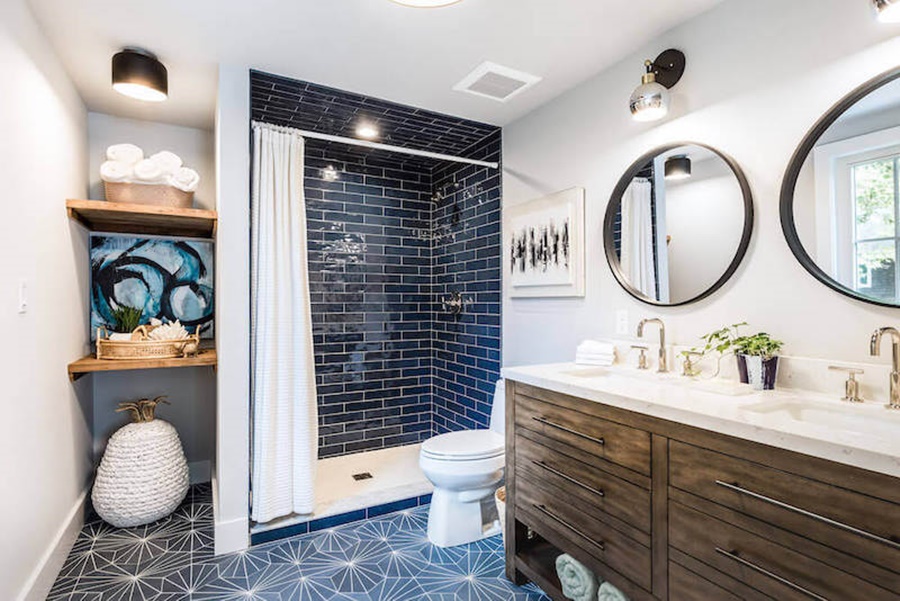Remodeling your bathroom can transform one of the most essential spaces in your home. But before tearing down walls or replacing fixtures, it's crucial to understand the permit process for bathroom remodeling. Navigating building regulations can be complex, but securing the proper permits is vital to ensure your remodel is legal, safe, and up to code.
Why You Need a Permit for a Bathroom Remodel
When it comes to home renovations, many homeowners wonder if permits are necessary. For bathroom remodeling, permits are typically required if your project includes:
Plumbing modifications
Electrical rewiring or upgrades
Structural changes, such as removing or relocating walls
HVAC installations or ductwork modifications
Failing to secure the appropriate permits can result in fines, construction delays, and problems during resale. Building inspectors ensure your remodel meets local building codes, protecting your safety and property value.
Determine What Permits You Need
Each municipality sets its own rules regarding remodeling permits. Start by contacting your local building or planning department to verify what’s required in your jurisdiction. Typically, the types of permits needed for a bathroom remodel include:
1. Building Permit
A building permit covers structural changes to walls, floors, and ceilings. If your project involves altering the layout or load-bearing structures, this permit is mandatory.
2. Plumbing Permit
You’ll need a plumbing permit if your remodel includes:
Moving or replacing water supply or drain lines
Installing new fixtures like bathtubs, toilets, or sinks
Adding new plumbing for a vanity or shower
3. Electrical Permit
If you’re updating lighting, adding outlets, or replacing your bathroom fan, an electrical permit ensures the work complies with the National Electrical Code (NEC).
4. Mechanical Permit
A mechanical permit is required for any HVAC changes, such as adding exhaust systems or relocating ductwork.
Step-by-Step Process to Obtain a Bathroom Remodel Permit
Step 1: Create a Detailed Project Plan
Start by preparing a comprehensive scope of work for your remodel. Include layout drawings, fixture placements, and any planned structural or system changes. Accurate planning is essential for approval and helps avoid costly revisions.
Step 2: Hire Licensed Professionals
Most municipalities require that work be performed by licensed contractors. Hiring licensed professionals increases the chance of passing inspections and receiving timely permit approval.
Licensed plumber for piping and fixture changes
Licensed electrician for wiring or lighting
Licensed general contractor for overall remodeling oversight
Step 3: Submit Permit Applications
Visit your city’s permitting office or online portal to file the applications. You will need to provide:
Detailed architectural drawings
Contractor licenses
Product specifications for appliances and fixtures
Permit fees (varies by location and project scope)
Step 4: Schedule Plan Review
Once your application is submitted, a plan reviewer will evaluate your project. They check for:
Code compliance
Proper fixture spacing
Electrical safety
Structural integrity
The review process typically takes 1–3 weeks, depending on complexity and local workload.
Step 5: Receive Approval and Begin Work
After approval, you’ll receive a permit card which must be displayed at the job site. Keep a copy of your approved plans onsite in case of inspections.
Inspections During and After the Remodel
Your remodel may require multiple inspections throughout the project. Common inspection stages include:
Rough-in Inspection: After plumbing or electrical lines are installed but before walls are closed.
Framing Inspection: For projects involving new framing or wall relocation.
Final Inspection: Once the remodel is complete, an inspector will ensure everything is installed correctly and safely.
Your contractor should schedule these inspections with the building department. If issues are found, they must be corrected and re-inspected before proceeding.
How Much Do Permits for Bathroom Remodel Cost?
Permit costs vary by location and scope of work. On average:
Building permit: $150–$500
Plumbing permit: $50–$300
Electrical permit: $50–$250
Mechanical permit: $75–$200
Some cities offer combined permits for single-room renovations. Always check if your locality offers permit bundles to reduce costs.
How Long Does It Take to Get a Bathroom Remodeling Permit?
The time required depends on:
Project complexity
Permit office workload
Completeness of submitted documents
Typically, straightforward remodels are approved within 1–2 weeks, while more complex plans involving structural changes may take 3–4 weeks or longer.
DIY vs. Hiring a Contractor for Permits
While it’s possible to obtain permits as a homeowner, many jurisdictions require licensed professionals for plumbing and electrical work. Even if you can pull the permits yourself, working with experienced contractors streamlines the process and ensures code compliance.
Benefits of hiring a contractor:
Handles permit applications and inspections
Understands local building codes
Provides drawings and specifications
Prevents costly delays or rejections
Common Mistakes to Avoid in the Bathroom Remodel Permit Process
Skipping permits to save time or money
Inaccurate plans or missing documents
Unlicensed work by DIYers or unqualified workers
Failing to schedule inspections
Not verifying local code updates
Avoiding these mistakes can prevent project delays, penalties, or forced reconstruction.
What Happens If You Remodel Without a Permit?
Unpermitted work can result in:
Hefty fines
Stop-work orders
Issues with home insurance coverage
Problems during home sale
Forced demolition or redo of non-compliant work
A proper permit ensures your remodel is legal, insurable, and safe.
Conclusion
Securing a permit for your bathroom remodel is not just a legal requirement it’s a critical step in ensuring a successful and lasting renovation. Whether you're upgrading fixtures or reconfiguring the entire space, following local permitting procedures protects your investment and provides peace of mind.
For the best results, consult your local permitting authority and work with licensed contractors familiar with the process. Proper permits pave the way for a seamless, code-compliant remodel that adds value to your home.

